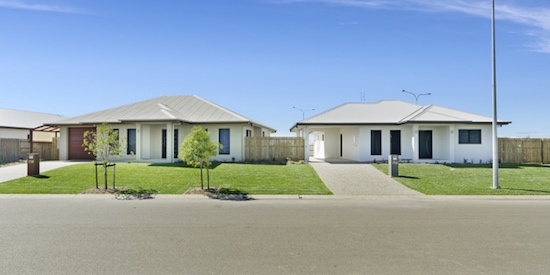
 Rooftop solar has been installed on almost 500 public housing homes across Cairns, Rockhampton and Lockhart River in Queensland, as part of a a state government scheme that winds up this week.
Rooftop solar has been installed on almost 500 public housing homes across Cairns, Rockhampton and Lockhart River in Queensland, as part of a a state government scheme that winds up this week.
In a statement on Thursday, the state energy and housing ministers called on more eligible tenants to join the trial solar rollout, before it is closed this Friday.
The scheme is one of a suite of policies unveiled late last year in an effort to open the way for thousands more homes in the Sunshine State – including the largely untapped rental market – to gain access to rooftop solar and battery storage and cut their electricity bills.
The problem is not unique to Queensland. As we reported here, data from last year’s national Census revealed nine council areas in greater Sydney, alone, where more than half of residents were “locked out” of solar – almost three-quarters of which were renters or tenants of apartment buildings.
For Queensland, meanwhile, both the solar loan and rental schemes will have the dual impact of unlocking that market, and helping the Palaszczuk government to reach its 2020 target of 1 million solar rooftops, or 3,000 megawatts (3GW) of installed capacity.
Currently, they sit at around 1.8GW, which makes combined solar installations bigger by capacity than the state’s biggest coal plant, the 1780MW Gladstone Power Station.
As part of the Palaszczuk government’s $2 billion Affordable Energy Plan, the public housing-targeted scheme offers no-interest loans to consumers wishing to invest in rooftop solar and battery storage, but lacking the up-front capital to do so.
The government says it hopes it will ultimately result in more than 700 solar systems being installed on the state’s public housing in Cairns and Rockhampton with a total capacity of around 3MW.
So far, the offer has been taken up by more than 350 households in Cairns and Rockhampton, the ministers said, with Ergon continuing to install 30 new systems a week in those cities.
“Public housing tenants participating in the trial in Cairns in Rockhampton are now using their solar power and can expect to see savings of up to $250 a year,” said Queensland housing minister Mick de Brenni.
In Lockhart River, another 130 households are using rooftop solar to help power the remote far northern Indigenous community, while a 200kW rooftop array and battery system installed on government and council buildings was providing around 10 per cent of the community’s power supply.
“This is bringing 130 families electricity savings of $100 per year and has also helped the environment by reducing the community’s use of diesel for generating electricity by up to 75,000 litres per year,” energy minister Anthony Lynham said.
Queensland Council of Social Service CEO Mark Henley said the project was a win for families battling the escalating cost of living – families that had traditionally been locked out of the rooftop solar market.
“More and more low-income households are being affected by rising electricity costs,” Henley said.
“This innovative trial will provide a great opportunity for some low-income households to have access to the benefits of solar which they otherwise would not have had.”
De Brenni said the next focus for the government was to use the trial to help to develop a workable model so solar power can be offered to Queenslanders renting in the private market.
He said that with renters unable to access solar unless it was already installed on the property, this was an important step towards all Queenslanders getting access to the benefits of renewable energy.

Sophie is editor of One Step Off The Grid and deputy editor of its sister site, Renew Economy. Sophie has been writing about clean energy for more than a decade.


